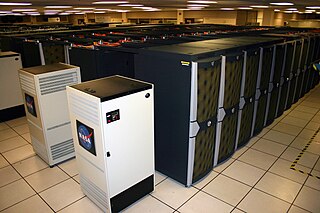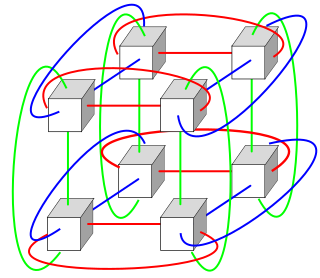 W
WThe Advanced Simulation and Computing Program is a super-computing program run by the National Nuclear Security Administration, in order to simulate, test, and maintain the United States nuclear stockpile. The program was created in 1995 in order to support the Stockpile Stewardship Program. The goal of the initiative is to extend the lifetime of the current aging stockpile.
 W
WThe Journal of Supercomputing is an academic computer science journal concerned with theoretical and practical aspects of supercomputing. Tutorial and survey papers are also included.
 W
WMessage passing is an inherent element of all computer clusters. All computer clusters, ranging from homemade Beowulfs to some of the fastest supercomputers in the world, rely on message passing to coordinate the activities of the many nodes they encompass. Message passing in computer clusters built with commodity servers and switches is used by virtually every internet service.
 W
WQuasi-opportunistic supercomputing is a computational paradigm for supercomputing on a large number of geographically disperse computers. Quasi-opportunistic supercomputing aims to provide a higher quality of service than opportunistic resource sharing.
 W
WThe Scalable Coherent Interface or Scalable Coherent Interconnect (SCI), is a high-speed interconnect standard for shared memory multiprocessing and message passing. The goal was to scale well, provide system-wide memory coherence and a simple interface; i.e. a standard to replace existing buses in multiprocessor systems with one with no inherent scalability and performance limitations.
 W
WChina operates a number of supercomputer centers which, altogether, hold 29.3% performance share of world's fastest 500 supercomputers. The origins of these centers go back to 1989, when the State Planning Commission, the State Science and Technology Commission and the World Bank jointly launched a project to develop networking and supercomputer facilities in China. In addition to network facilities, the project included three supercomputer centers. China's Sunway TaihuLight ranks third in the TOP500 list.
 W
WJapan operates a number of centers for supercomputing which hold world records in speed, with the K computer becoming the world's fastest in June 2011. and Fugaku took the lead in June 2020, and furthered it, as of November 2020, to 3 times faster than number two computer.
 W
WThe high performance supercomputing program started in mid-to-late 1980s in Pakistan. Supercomputing is a recent area of Computer science in which Pakistan has made progress, driven in part by the growth of the information technology age in the country. Developing on the ingenious supercomputer program started in 1980s when the deployment of the Cray supercomputers was initially denied.
 W
WT-Platforms is a Russian supercomputer company.
 W
WTeraGrid was an e-Science grid computing infrastructure combining resources at eleven partner sites. The project started in 2001 and operated from 2004 through 2011.
 W
WA torus interconnect is a switch-less network topology for connecting processing nodes in a parallel computer system.